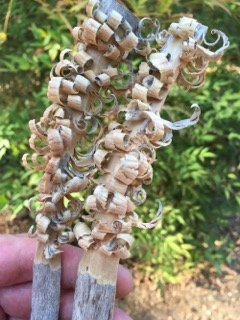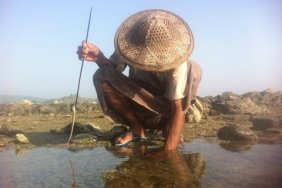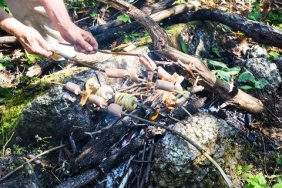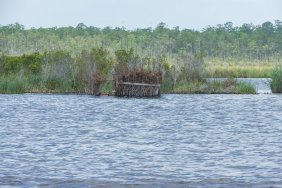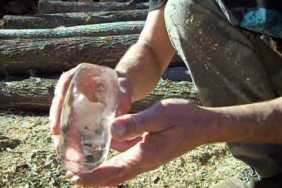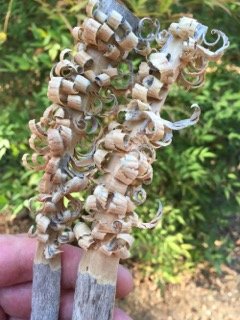 I have a great teaching technique that I use when I am trying to emphasize the importance of fire making. I give my students five minutes to build a fire structure that they think will be sufficient to get a fire going. But, there is a catch . . . they only get one match.
I have a great teaching technique that I use when I am trying to emphasize the importance of fire making. I give my students five minutes to build a fire structure that they think will be sufficient to get a fire going. But, there is a catch . . . they only get one match.
Usually they do pretty well building a nice ti-pi style structure using small, dry branches. Some do a good job getting a tinder bundle together beneath the tipi structure. Unfortunately, most fires fail because of the quality of the tinder. You can have a nice structure, but if you struggle to light it, it’s basically useless, especially if you only get one shot.
There are many good sources of tinder but the reality is that good tinder can be really hard to find—especially if you only have five minutes.
This is when the feather stick comes in handy. Relatively unknown, or simply forgotten, the idea behind the feather stick is that you can have tinder and kindling in one package. Made correctly, they are easy to light and will sufficiently start a fire.
If you are in wet conditions, have limited tinder and ignition sources or are in a critical survival situation, knowing how to make a good feather stick can be a life saver. You can also stick a couple in your pack for later use or if you think you might be in for a stretch of wet weather. The best part is that they’re easy to make.
The first thing you want to make sure is that you have dry wood. Anything laying on the ground will have a tendency to pick up moisture and is generally not a good idea. Look for dead standing wood (wood that is dead, but is off the ground) or you can use a bigger piece and split it down. For easier fire starting, try to find a soft wood. Soft wood is easier to carve and usually easier to light. You will eventually want the harder wood to sustain your fire, but usually a softer, lighter wood works best for feather sticks.
Making feather sticks is relatively easy. You want to use a piece of wood that is somewhere around 6-to-10 inches long. Too long is bulky and too short is hard to hold while lighting. Use common sense. You want to make shavings, some thick and some thin all the way around the stick. The idea behind making some thick and some thin is that the thin ones will ignite and then catch the thicker ones to help sustain the flame. Work your way up the stick until you have a somewhat fluffy looking stick with a handle. If some of the shavings fall off, keep them (somewhere off the ground) for your tinder bundle or to put in the fire structure.
Practice making these sticks when you’re tooling around camp. You can stick a few in your tent to stay dry and then use them to build your morning fire. Feather sticks are useful and fun to make. They provide valuable tinder/kindling for starting a fire, and when kept dry, can make starting a fire in wet conditions much easier.
